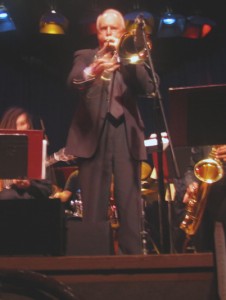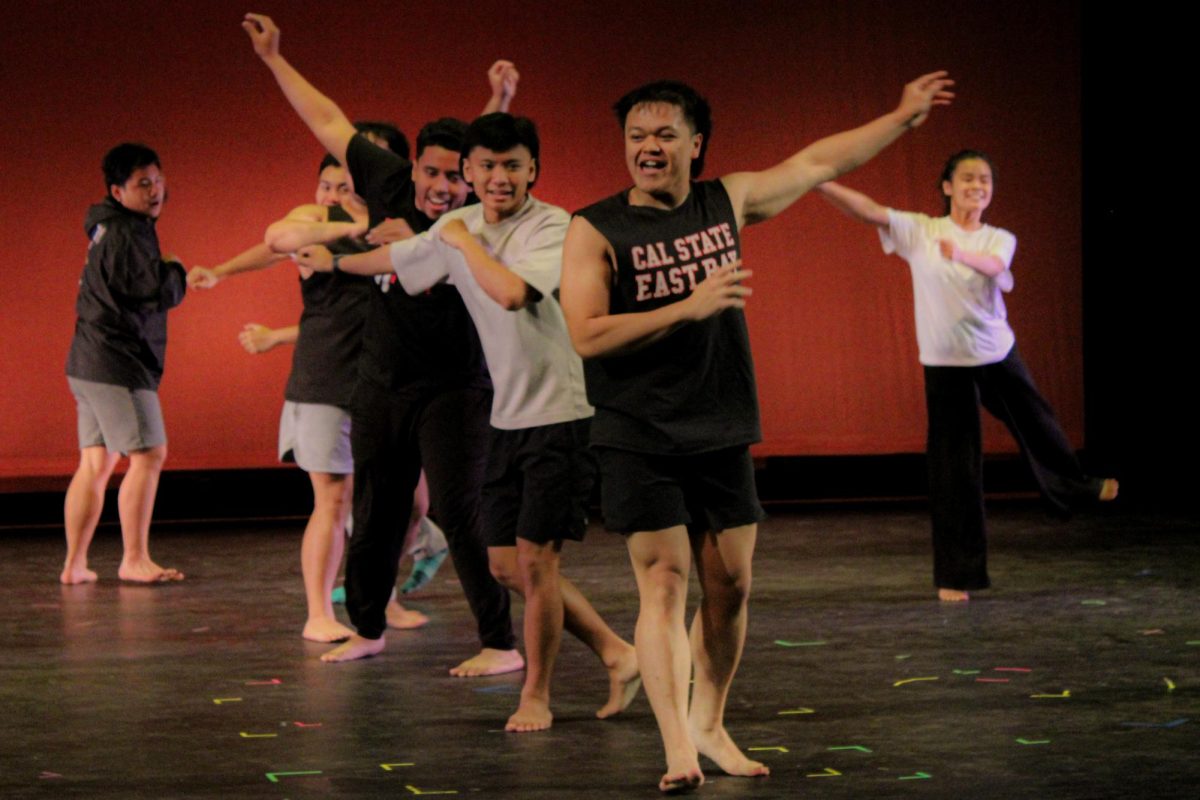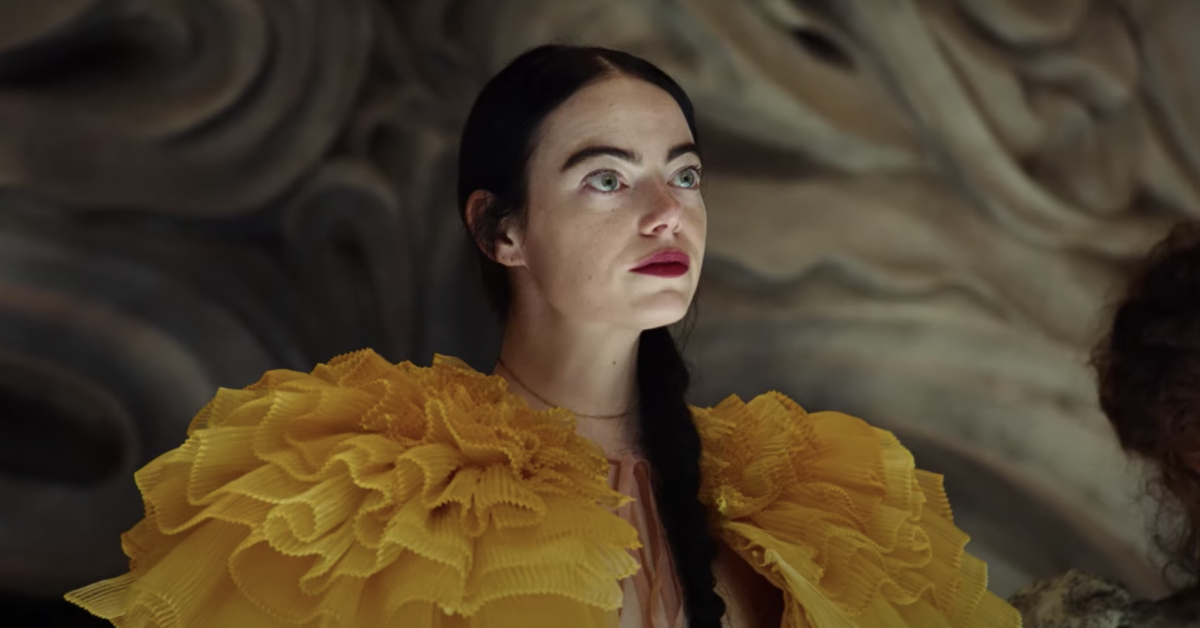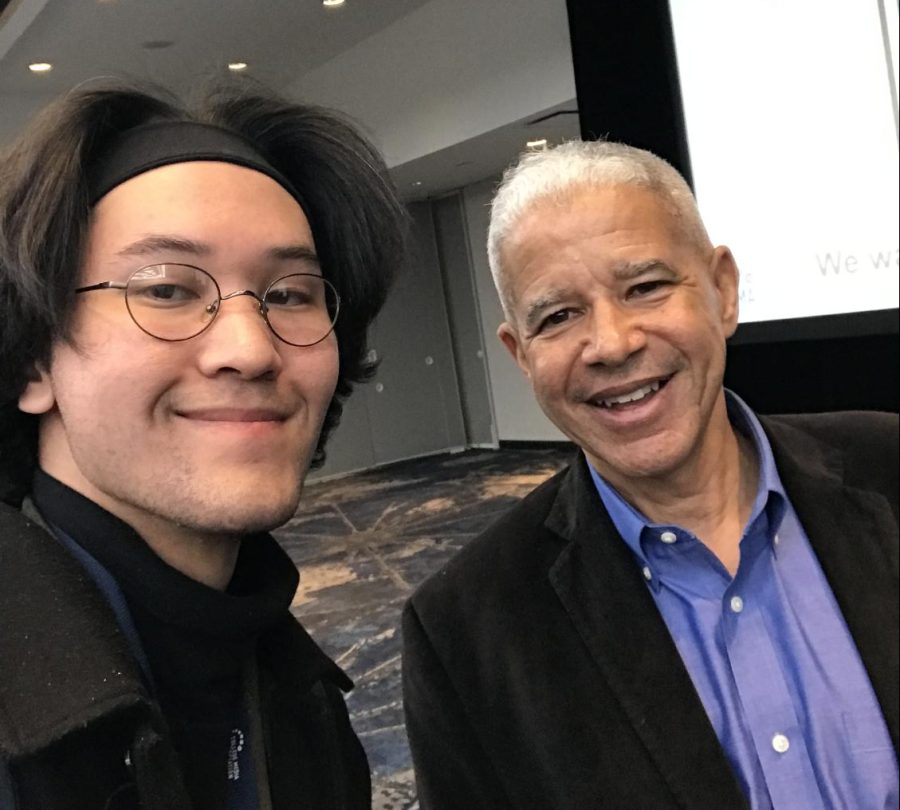
The best of CSU East Bay’s thriving jazz program was showcased at the world famous Yoshi’s Jazz Club and Restaurant in Oakland’s Jack London Square.
The crowd was treated to a smattering of everything that jazz has to offer in the 21st century, as ensembles ranging from contemporary, electric, big band and Latin took to the stage. The proceeds of the concert are set to go to scholarships for music students.
The evening was anchored by the return of CSUEB emeritus professor trombonist Dave Eshelman, who, after 40 years of playing and composing with groups all over the world has just been voted into the 2011 class of the California Alliance for Jazz Hall of Fame.
Eshelman is known for aiding in the renaissance that the art form of the big band has gone through in recent decades.
But the performance was not all about Eshelman. Assistant Professor Johannes Wallmann sired as CSUEB students brought their unique stylings and honed skills to the forefront.
First up was the Contemporary Jazz Ensemble, which ripped into a brand new composition called “New Wao 7” written by drummer Joseph Niehuis.
The recently formed ensemble floated around a regularly recurring melody that was driven by a modern backbeat holding to the traditional needs of four on the floor. The prominently featured guitar stepped out of the shadows of the rhythm sections as the song traversed through several elaborate breakdowns.
Eshelman joined the coupling of saxophones in the horn section for the second number, entitled “Elm,” which Eshelman attributed to the authors, noted pianist and composer Richie Beirach, a deceased instructor who was “so strong he was like a tree.”
Eshelman was strong as he crooned through a solo that followed a run through of the tunes overarching melody. For comparison, the melody was a mixture of the “M.A.S.H.” theme “Suicide is Painless” and The Hulk’s “Lonely Man” walking away song. The song was gentle enough to be somber, yet briskly gaited as to breathe new life.
Next up was the personal favorite Electric Jazz Ensemble, which typically means a more prominently featured rhythm section with electrified piano and bass.
The ensemble also featured a tenor sax and a bass clarinet that fused well to round out the groups melodic edges. The first song, which was called “Test Run,” was slightly more polished then the name might suggest. It featured a bass solo, which, although innovative, was not in the realm of a Victor Wooten.
The song also featured a well-crafted guitar solo which managed to stay strictly jazz orthodox while running through scales and counter melodies.
The second number, aptly titled “Roswell,” started off with an otherworldly sci-fi effect laden guitar riff that smoothly blended into the horns, which picked up a traditional jazz chorus of the “Caravan” ilk.
After a well-crafted drum solo that bounced between Gene Krupa and John Bonham, the composition ended on a series of breakdowns reminiscent of that which can be found around ten minutes into Dream Theater’s “Metropolis Part I.” The keyboard playing of Tim Wat also ventured into the prog-rock virtuosity of Theater’s Jordan Rudess.
CSUEB’s Electric Ensemble managed to perfectly display how jazz can be made relevant to the new generation of music consumers, even those who may be waiting impatiently for Akon to bust in with the hook.
The night was, of course, capped off by the CSUEB Jazz Orchestra, introduced as “the biggest band of the evening,” with Eshelman squarely at the helm. The first number, Duke Pearson’s blues standard “Minor League,” harkened back to the roots of big band swing while managing to sound a little less stuffy than usual, probably due to the intimate confines of Yoshi’s.
After Eshelman re-emerged on the stage, the band played through four of his own arrangements, included one of Miles Davis’s classic “Kind of All Blues.” It may seem odd to tinker with the work of a jazz great such as Miles Davis, but that is what the genre is all about—improving and reusing. Jazz is not meant to exist locked into some old vinyl record, it is constantly evolving to fit the times and specific uniqueness of those who play it and those who listen to it.
Although the performance featured many great soloists, two that stood out were those of tenor saxophonist James Nelson and baritone saxophonist Lavell Jones.
A moment of humor came when Eshelman introduced the song “Old Folks” to which some members of the audience shouted out, “What?”
Eshelman and the entire jazz department were in fine form as they performed for the mostly filled theater that has hosted so many jazz greats over the years.
“It’s so nice to come back after a long time and play with such a nice ensemble,” said Eshelman, as the band launched into its final numbers. “I’m very excited because some of my neighbors are here, and now they know what all those strange noises were.”










